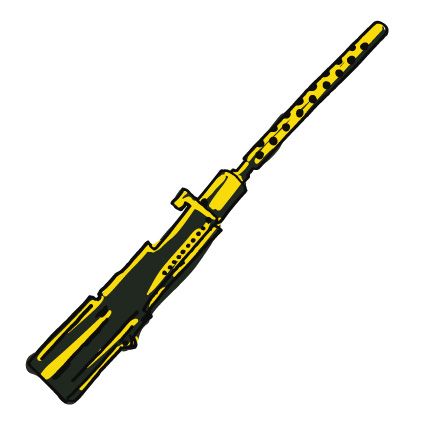
1944 nyarán a II. világháború közvetlenül érinti már Felsőörs községet, mivel április 3-tól számtalan alkalommal húztak el amerikai bombázókötelékek a Balaton légterében támadó vagy abból visszatérő útjuk során. 1944. július 7-én 12 óra 30 perckor egy magányos, kötelékétől elszakadt négymotoros amerikai B-24 H Consolidated Liberator tűnt fel füstölve a községtől északra. A bombázógép az olaszországi Giulia reptérről szállt fel aznap hajnalban több száz társával együtt, és stratégiai céljuk a Bécs körüli német olajfinomítók rombolása volt. A 15. amerikai légihadsereg 304. bombázószárnyának 459. bombázócsoportjához tartozott Mooney ezredes parancsnoksága alatt. A füstölgő, égő gépet a 101. honi vadászrepülő-osztály egyik pilótája, Benkő Lajos (veszprémi illetőségű) üldözte Messerschmitt Bf 109 G-6-os vadászgépével. Eközben a vörösberényi 103/II-es légvédelmi üteg 80 mm-es ágyúja és a Danuvia gyártelepen telepített 203. légvédelmi tüzérosztály 40 mm űrméretű Bofors gépágyúja is tüzet nyitott a bombázóra. Benkő Lajos hadnagy a Balaton felett szembefordulva szemből támadta a gépet, mely már lángolt, és személyzetéből ketten még épp ugrottak, mások – 5 fő hajózó – már sikeresen földet értek Királykút és a szentkirályszabadjai lőszerraktár közelében. 1700 m-es magasságban ekkor a repülőgép váratlanul felrobbant, roncsai az erdőben szóródtak szét. Az egyik fedélzeti lövész, Everett R. Dutton őrmester és a navigátor, Winston G. Emert hadnagy épp a robbanás pillanatában ugrott ki, így ők zárt ejtőernyővel értek földet, és szörnyethaltak. A főpilóta, Robert E. French hadnagy és Sam J. Sdrales hadnagy másodpilóta a gép orr-részének lezuhanó roncsaiban lelték halálukat. A négy repülőhalált halt amerikai katonát estefelé a községi temetőben eltemették, később pedig exhumálták őket. Az itt látható Browning M2-es géppuska a B-24 H bombázógép fedélzeti fegyvereihez tartozhatott.
A 12,7 mm-es (50 kaliberű) Browning M2 géppuska:
A fegyver elterjedése a II. világháborúban vált általánossá. Az amerikai hadsereg és a légierő (USAAF) több százezres mennyiségben rendelte és rendszeresítette különböző járművein, különös tekintettel a repülőgépekre. A M2-es és különféle változatai az 1940-es évektől egészen napjainkig szinte valamennyi jelentősebb fegyveres konfliktusban jelen voltak, illetve vannak.
1993-ban édesapám révén hallottam először a Felsőörsön lezuhant amerikai bombázógépről. Később, már múzeumi dolgozóként kutattam a gép történetét, és Mohos Nándor barátom segítségével minden részletes adatot megtudhattam a fiatal, 20-as éveikben itt lezuhant amerikai repülősökről. Történetükhöz kézzelfogható kapcsolatot biztosított a Veress D. Csaba által begyűjtött Browning M2-es géppuska maradványa a múzeum Hadtörténeti gyűjteményéből.
Pálffy Sándor
restaurátor
Erre haladjon tovább:
Az üveges szekrény hátuljának jobb szélére dugtuk el a QR-kódot. A vitrinben lévő pártarekonstrukcióról olvashatunk.
In the summer of 1944 World War II. is directly affected the village of Felsőörs, since the 3rd of april, countless bomber squadrons passed over the airspace of Balaton, either on their way to a strike or on their way back from one. In 1994, on the 7th of July, at 12:30 a single, smoking B-24H Consolidated Liberator type bomber broke off from a squadron and appeared over the northern part of the village. The bomber took off from the Italian Giulia airport at dawn, with several hundred of its companions, their strategic goal being the destruction of German oil refineries around the city of Vienna. The plane belonged to the 15th Air Army, to the 459th group of the 304th bombardment wing, under the command of colonel Mooney. The smoking, burning plane was chased by a pilot of the 101st fighter squadron, Lajos Benkő(hailing from Veszprém), in his Messerschmitt Bf 109 G-6 type fighter plane. Meanwhile, the 103/II 80mm anti-aircraft battery in Vörösberény, and the 203rd artillery squadrons 40mm caliber Bofors autocannon, installed at the Danuvia factory complex both began to open fire at the damaged bomber. Lieutenant Lajos Benkő, attacked the flaming bomber head-on over the Balaton. Of the plane's crew, 5 chief pilots already jumped and landed near Királykút and around the grounds of the ammunition warehouse in Szentkirályszabadja, but 2 people jumped later, during the active confrontation, at which point the plane suddenly exploded at an altitude of 1700 meters, its wreckage scattered through the forest. Two of the crew's members, flight gunner, sergeant Everett R. Dutton, and navigator, lieutenant Winston G. Emert jumped at the time of the explosion, which caused the parachutes to malfunction and not open during their fall; they suffered a gruesome death upon landing. Lead pilot, lieutenant Robert E. French and co-pilot, lieutenant Sam J. Sdrales found their end among the wreckage of the torn off nose-section of the bomber. The four American soldiers who died were initially laid to rest in the municipal cemetery and later exhumed. The presented Browning M2 machine gun, is suspected to be a part of the bombers on-board weaponry.
12,7 mm (50 caliber) Browning M2 machine gun:
The use of this firearm became widespread and common during the second world war. The United States Army Air Forces (USAAF) ordered several hundred thousands of these weapons and standardised their use on their armed vehicles, with a particular attention to their airplanes. Since the 1940s the M2 and its other variations were, and are still present in the world's notable armed conflicts.
The first time I heard about the bomber plane that crashed near Felsőörs was when my father told me about it in 1993. Later in life, I researched this aircrafts history as an employee of the museum, and with the help of my friend Nándor Mohos, I managed to find every minute detail about the four, young aviators who found their end in their twenties during this bomber’s crash. The remnants of the Browning M2 machine gun which was collected by Csaba D. Veress, and is a part of the military history collection of the museum, provided a tangible connection to their history.
Sándor Pálffy
conservator
Proceed to this:
We hid the QR code near the right edge of the glass cabinets back. We can read about the reconstruction of the traditional headdress (párta) that you can see in the display case.